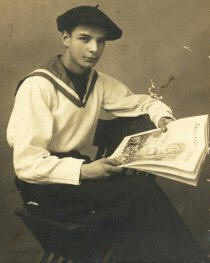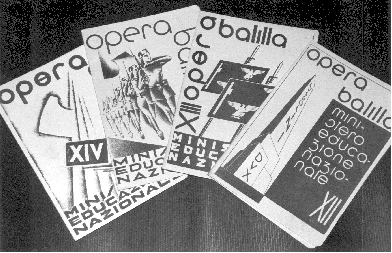 ITALIAN
MODERN ART AND ARCHITECTURE:
ITALIAN
MODERN ART AND ARCHITECTURE:
from the Macchiaioli to the Transavanguardia (1860-2000)
Prof. Irene Baldriga
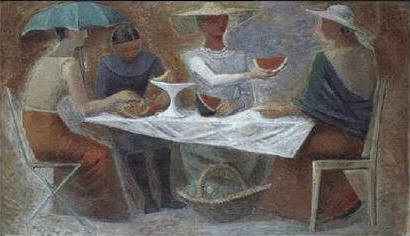
Description: the course will be focused on the most important artistic movements which developed in Italy between 1860 and 1970 ca. The constant reference to European culture will be the leit-motiv of the course, which will try to underline not only the peculiarities of Italian modern art, but also its strong connections to the international context. Political and historical references will help students to better understand the meaning of artists’ choices and experiences, while literary texts and additional, heterogeneous, visual materials will enhance their awarness of the sincretistic aspect of 20th century art.
![]() Click on the thumbnails to
know more:
Click on the thumbnails to
know more:
Syllabus - Readings - Field Trips - Class Time - Grading - Research Papers - Course Objectives - Instructor's Profile - Links - Contacts
Gallery of Pictures (password required)
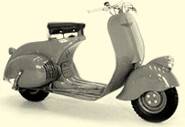 ("Vespa",
the famous scooter produced since 1946)
("Vespa",
the famous scooter produced since 1946)
Course objectives:
By the end of the course students will have:
- an outline of the European history between Italian Unification and WW II;
- a familiarity with the principal European and Italian artistic movements of 20th century;
- an awareness of the interaction between different artistic expressions which is on the basis of the evolution of Italian contemporary art;
- a comprehension of the relation between art and politics during the 20th century;
- a basic ability to describe and to interpret contemporary art.
- a knowledge of the different materials and techniques used in modern art.
Course format: since the work of art will be the central focus of the course, classes will be held – partly – in situ (see the list of visits below).
Method of presentation: lectures, seminar discussions, visits to monuments and sights, slides, use of multimedia and internet resources (selected by the instructor).
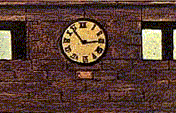 (Giorgio De Chirico, L'enigma dell'ora, 1911, detail)
(Giorgio De Chirico, L'enigma dell'ora, 1911, detail)
Class Time: Monday and Wednesday 16,30-18,00 (Classroom 26, LUISS, Via Pola) - Field studies will mostly take place on Friday.
 (Fortunato Depero, Lettrice e Ricamatrice Automatiche, 1920)
(Fortunato Depero, Lettrice e Ricamatrice Automatiche, 1920)
N.B.: The readings for this course are particularly engaging. Modern Art necessarily involves some interdisciplinary connections, especially with history and philosophy. The study of readings will take, thus, a major role in the successfull result of attentants.
Readings:
E. Paulicelli, “Art in Modern Italy: from the Macchiaioli to the Transavanguardia” in The Cambridge Companion to Modern Italian Culture, by Zygmunt G. Baranski (ed.), Rebecca J. West (ed), Cambridge: 2001, pp. 243-263 (introduction to the course).
R. Humphreys, Futurism, Cambridge University Press, 1999.
R. Etlin, Modernism in Italian Architecture, 1890-1940, Cambridge, Mass., and London, 1991 (pp. 377-390 and pp. 482-516).
E. Braun (ed.), Italian Art in the 20th century: painting and sculpture, 1900-1988, exhibition catalogue, London: Royal Academy of Arts, 1989 (selected chapters)
Modern Art: Painting, Sculpture, Architecture, Photography, ed. by S. Hunter, J. Jacobus, D. Wheeler, Prentice Hall: New York, 2004 (selected chapters)
H. Honour&J. Fleming, The visual arts: a history, Prentice Hall: London, 2002 (selected chapters)
Primary sources to be discussed in class will be selected from: Art in Theory, 1900-2000. An Anthology of Changing Ideas, ed. by Ch. Harrison and P. Wood, Blackwell: Malden MA, USA; Oxford, UK; Victoria, AUS; 2004.
ADDITIONAL SUGGESTED READINGS
E. Braun, “The visual arts: modernism and fascism” in Liberal and fascist Italy, 1900-1945, ed. By A. Lyttelton, Oxford: Oxford University Press, 2002.
S. Pinto, A History of Italian Art in 20th century, Milan: Skira, 2002.
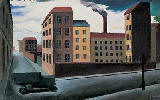 (Mario
Sironi, Urban Landscape, 1919)
(Mario
Sironi, Urban Landscape, 1919)
Field Trips:
Galleria Comunale d’Arte Moderna; Galleria Nazionale d’Arte Moderna; La Casina delle Civette; La Casa di Giorgio de Chirico; the EUR; la Città Universitaria. Possible visits to Art Galleries in Rome.
Changes to this list of field trips may be made on the basis of the possibility to obtain special permission to visit sights usually closed to the public. Priority will be given to monuments and sights not easily accessible. For field trips requiring special permissions, students will be asked to sign in advance a sheet of reservation.
Students are strongly encouraged to visit on their own sights and monuments treated by the course which, for evident didactic reasons and lack of time, it will not be possible to visit together.
Research Papers:
N.B.: Cheating and plagiarism will be not tolerated in any form and will automatically imply strict disciplinary action. Papers which should result to be copied, even in parts, from other written sources or internet sites will be graded F.
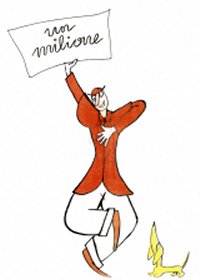 (Sergio Tofano alias Sto, Il Signor Bonaventura, popular cartoon published in
Italy since 1917)
(Sergio Tofano alias Sto, Il Signor Bonaventura, popular cartoon published in
Italy since 1917)
Grading:
Required
work and form of assessment:
Class attendance and participation (20%); midterm (25%); research paper
(25%); final exam (30%). Final exams will be based on both the course
lectures and the assigned readings.
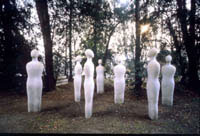 (Fausto Melotti, The Seven Wise Men, 1935, Rovereto, MART)
(Fausto Melotti, The Seven Wise Men, 1935, Rovereto, MART)
Our Virtual Classroom:
A Virtual Classroom has been created to encourage discussion among the group. Students are strongly encouraged to participate, sending materials and sharing thoughts and opinions about the topics treated in the real class, assignments and readings. Proposals are welcome.
You can join the Virtual Classroom from the site www.nicenet.org, typing the code you will be provided by the Instructor after the add-and-drop period.
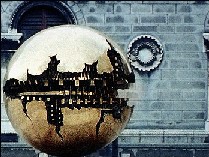 (Arnaldo Pomodoro, Sfera, Trinity College)
(Arnaldo Pomodoro, Sfera, Trinity College)
Useful Links from the Internet:
Giorgio De Chirico Official Web Site
Massimo Campigli Official Web Site
Fortunato Depero Official Web Site
Modern Architecture in Italy, 1928-38 (in Italian)
Sergio Tofano alias Sto (on cartoons)
Historical Archive of the Istituto Luce (original documentaries and films since the 30's)
The Scuola Romana: art in Rome between the two WW wars
Futurist Architecture: 1909-1944
Alberto Burri: exhibition 1996-1997 (many images and information)
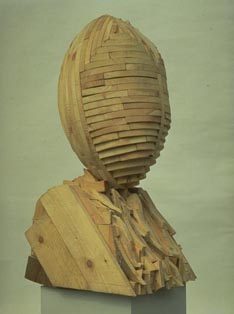 (Mario Ceroli, Andromaca, 1982)
(Mario Ceroli, Andromaca, 1982)
Instructor's Profile:
Irene Baldriga is art history Ph.D.; she graduated from Rome’s University “La Sapienza” and was awarded with several fellowships from Italian and foreign cultural institutions. She has a wide experience in teaching art history and regularly participates to international academic projects. She has published extensively in Italian and English on art history topics from medieval to contemporary times and participated to the organization of several exhibitions. She recently published a book for the Accademia Nazionale dei Lincei. Her favourite field of research is Renaissance and Baroque art, the history of collecting and patronage and the relation art-science in early modern Europe.
See also her other courses: Rome as a Living Museum (Fall 2005 - with Prof. Racioppi); XVI and XVII century Art and Papal Patronage (Spring 2005); "Late Antique and Early Christian Art in the Mediterranean World" (Fall 2005)
Photo Gallery from previous courses
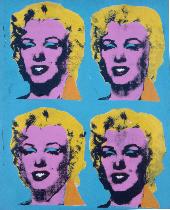 Gallery of Images from the course:
Gallery of Images from the course:
Go to the page www.irenebaldriga.it/modern_password.htm and type the password you will receive from your Instructor.
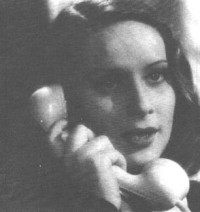 (Alida Valli, Italian actress very popular in the 30's)
(Alida Valli, Italian actress very popular in the 30's)
Contacts:
